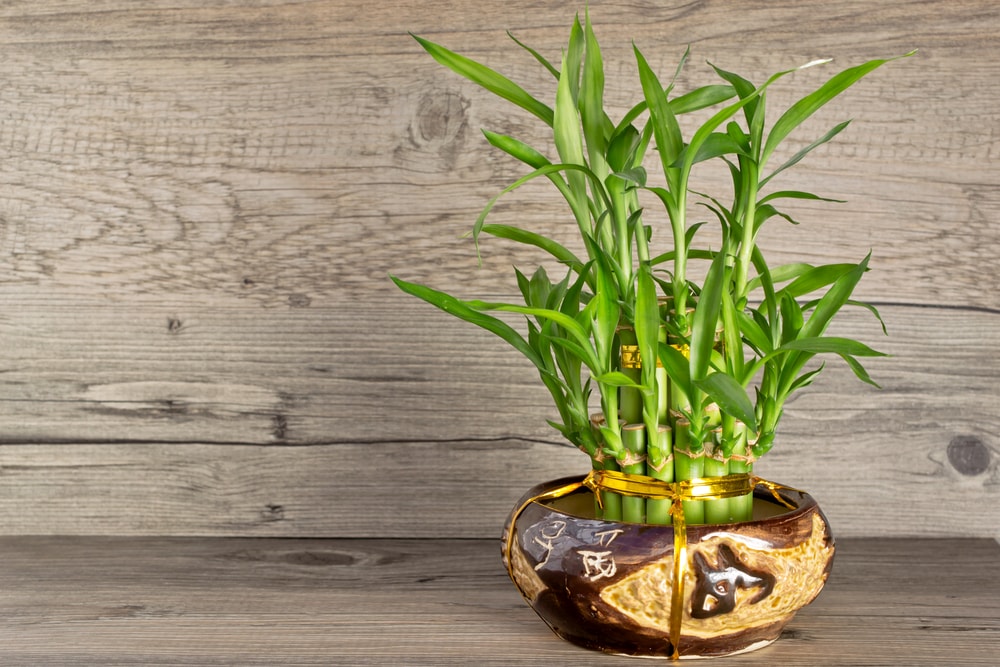ARE YOU FEELING LUCKY AS WE BEGIN THE NEW YEAR?
Technically, lucky bamboo is not a bamboo at all, but cane cuttings of Dracaena sanderiana. Dracaena sanderiana is sometimes referred to as the Ribbon Plant: loose rosette of narrow white-striped leaves on white-striped trunks. It has been an Asian symbol of good fortune and prosperity for thousands of years, promising health, love, longevity, and luck to whoever possesses it. The lucky bamboo plant has naked branches that end in tufts of long, thin leaves. As the plant ages, the growing leaves eventually develop into the plant stalk. Native to Cameroon in West Africa, it has the general characteristics of the more common dracaenas, but this species grows to only about three feet tall with finger-sized stems.
The past few years, lucky bamboo has had a surge in popularity. The University of Arkansas’ agricultural website attributes its “rise to stardom in the horticultural world as a sign of the multinational world we now live in. It’s a fusion of eastern mysticism, western New Age culture, good marketing savvy and the laws governing plant importation.”
One fact that makes this lucky plant so attractive is its ability to be trained into shapes like swirls, curls, or braids. To me, the popularity of lucky bamboo comes from its unique look and the fact that it is low maintenance.
Here are a few growing tips:
Watering
Keep the lucky bamboo stems in water constantly. Add water to a couple of inches above the roots. Change the water every week to ten days so that the water remains clear and clean smelling.
Lighting
Lucky bamboo does best in indirect lighting: avoid the full sun.
Toxicity
Lucky bamboo is toxic to dogs and cats when ingested, but not toxic to humans.
Disease
Spider mites can become a problem. Washing the leaves with insecticidal soap can control them.
Fertilizing
We recommend a diluted solution of liquid houseplant fertilizer every couple of months.
Lucky bamboo is thought of as “one tough little plant.” It is easy to keep thriving for years when cared for properly. The number of stalks in one container also has a significance. Two stalks double your luck and offer an abundance of love. Three stalks promote happiness, long life, and career promotion. Four stalks are BAD luck.


The bamboo article was very interesting. I was wondering though, mine has gotten very large and in a very small container, how can I transplant it? Plus, If I decide to cut it, how do I root it?
Thank you for your interest to this.
Glad you like the articles. The best way to decrease the size of your bamboo stalks is by removing the actual leaves from where they are growing. You don’t want to trim off the bottom because that is where your roots are growing. You could trim at the top of the stalk and start all over. It works. But, I would like you to cut the foliage back first and see if you are satisfied with the new size. Good luck, Doug
3 layer lucky bamboo plant is also known to bring positive energy, Good Luck and fortune.
Thank you for sharing your wisdom on Lucky Bamboo.